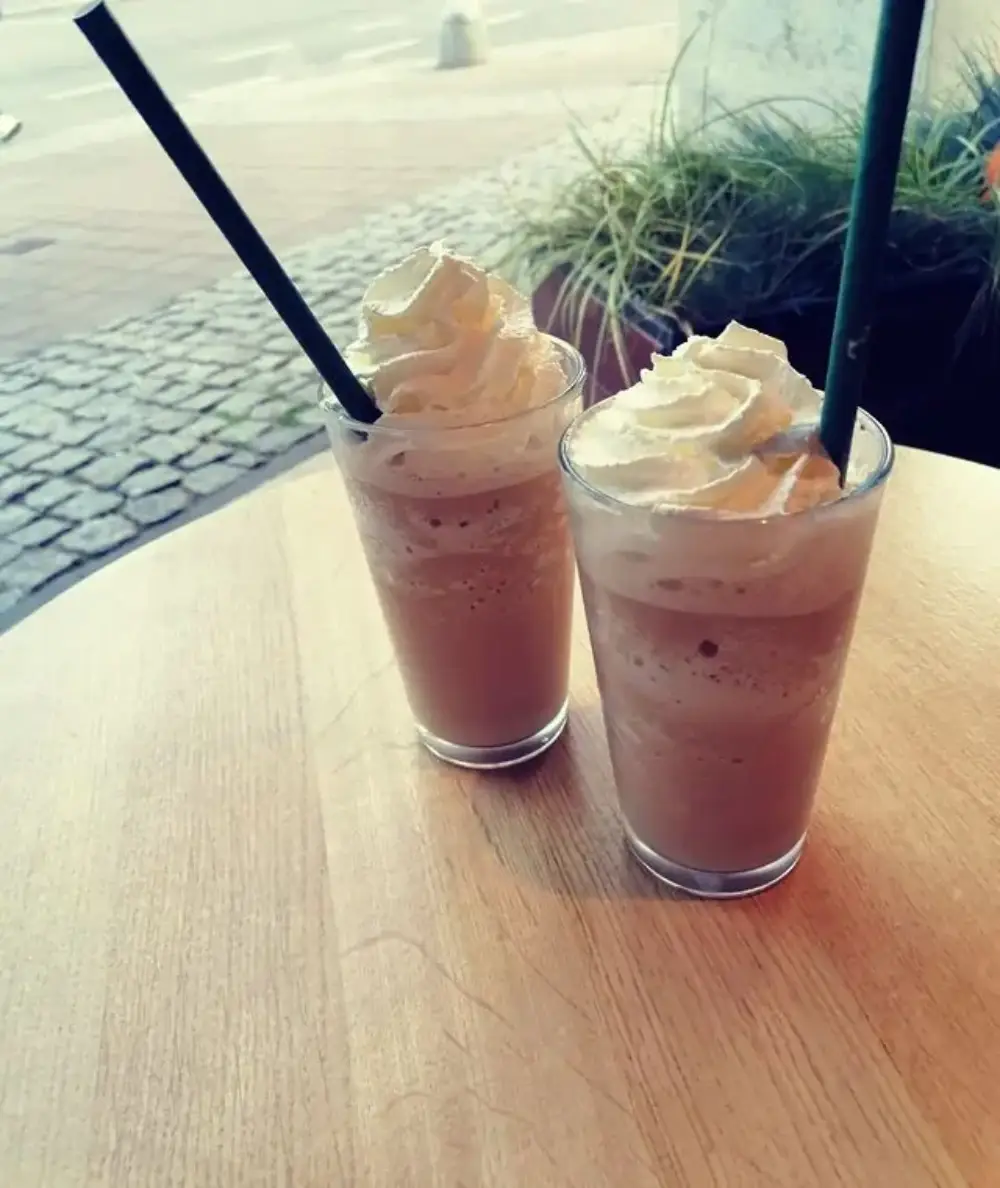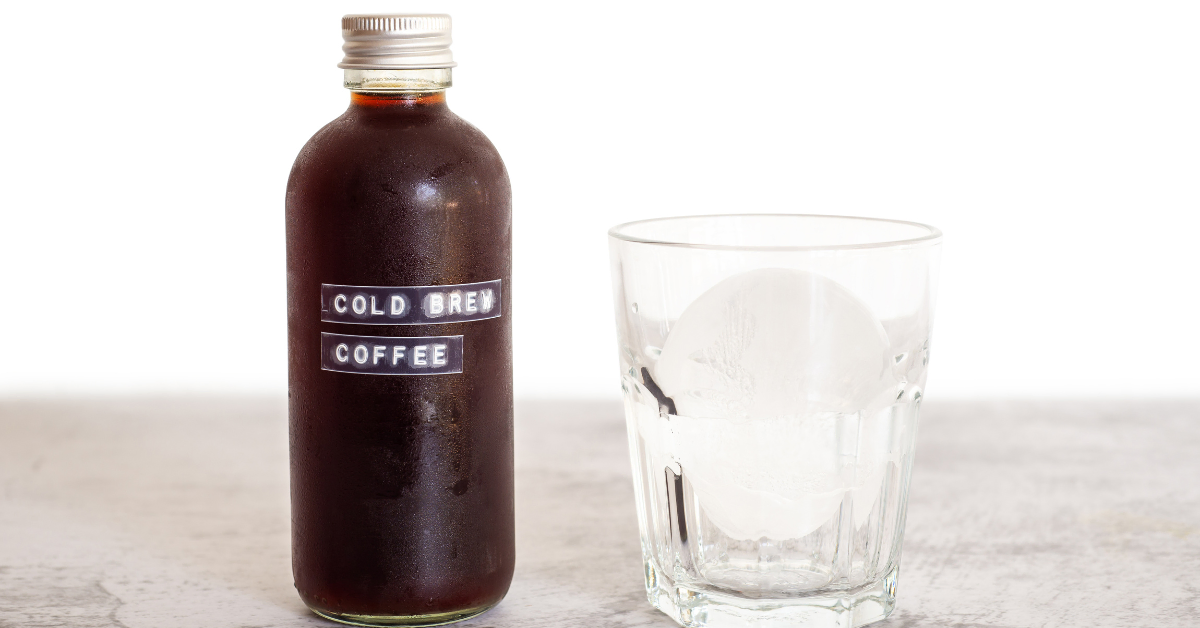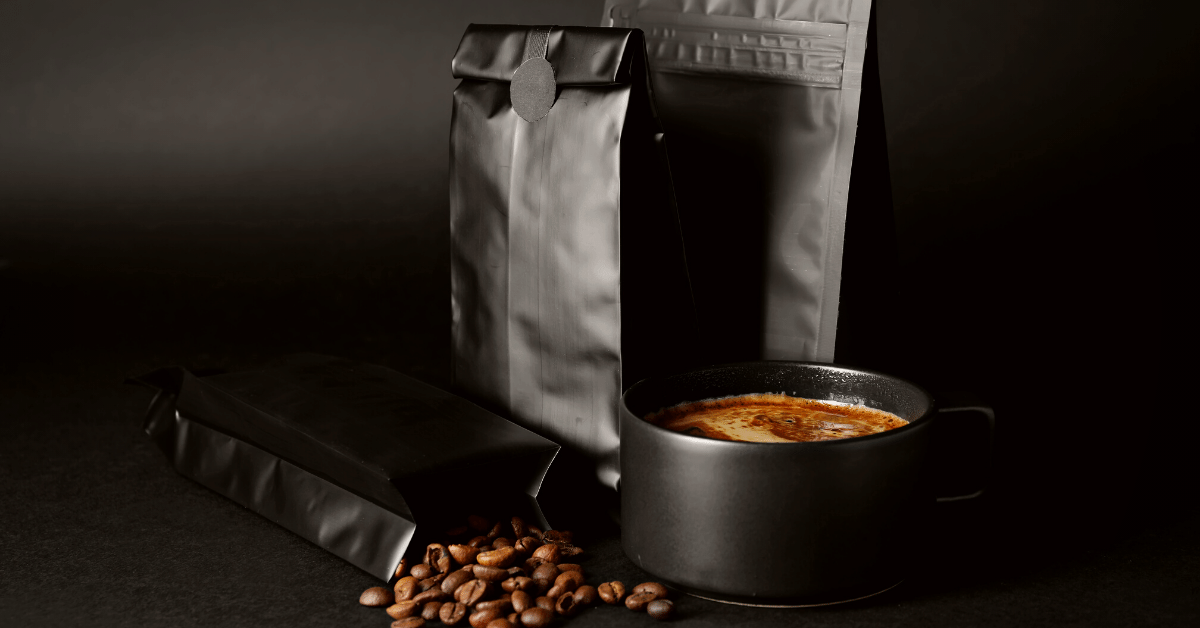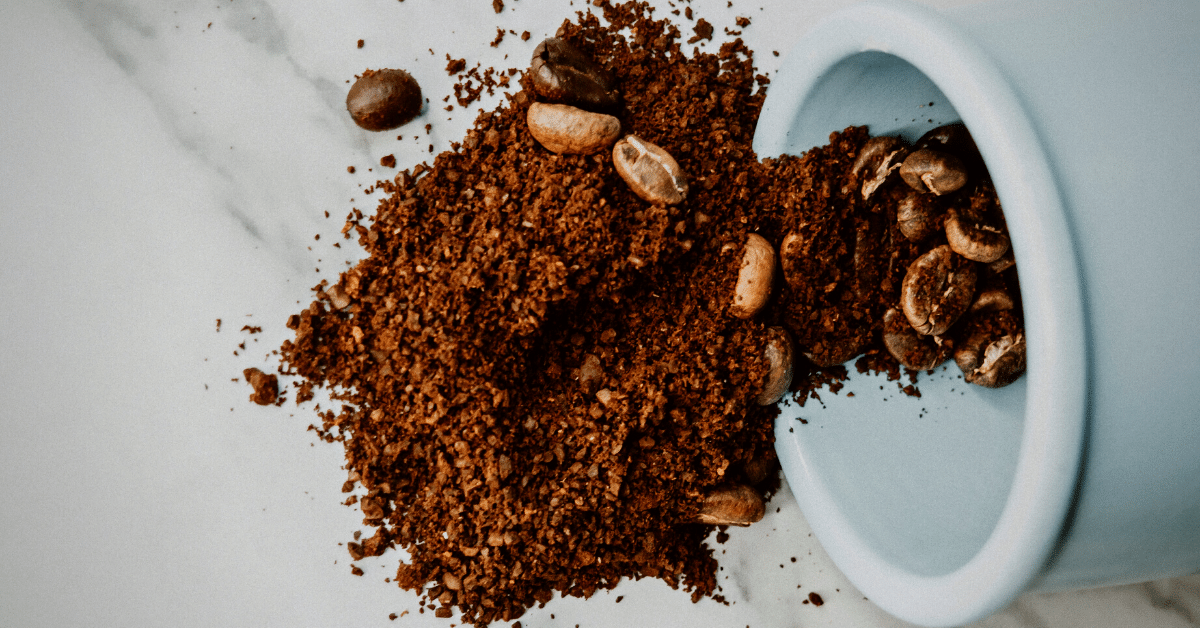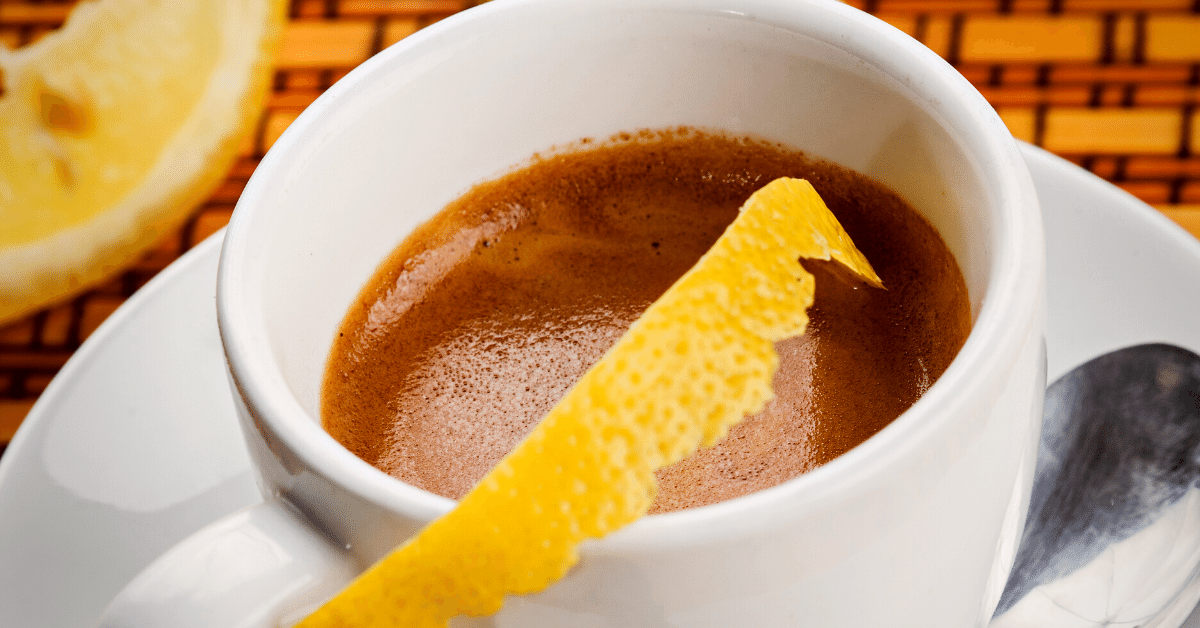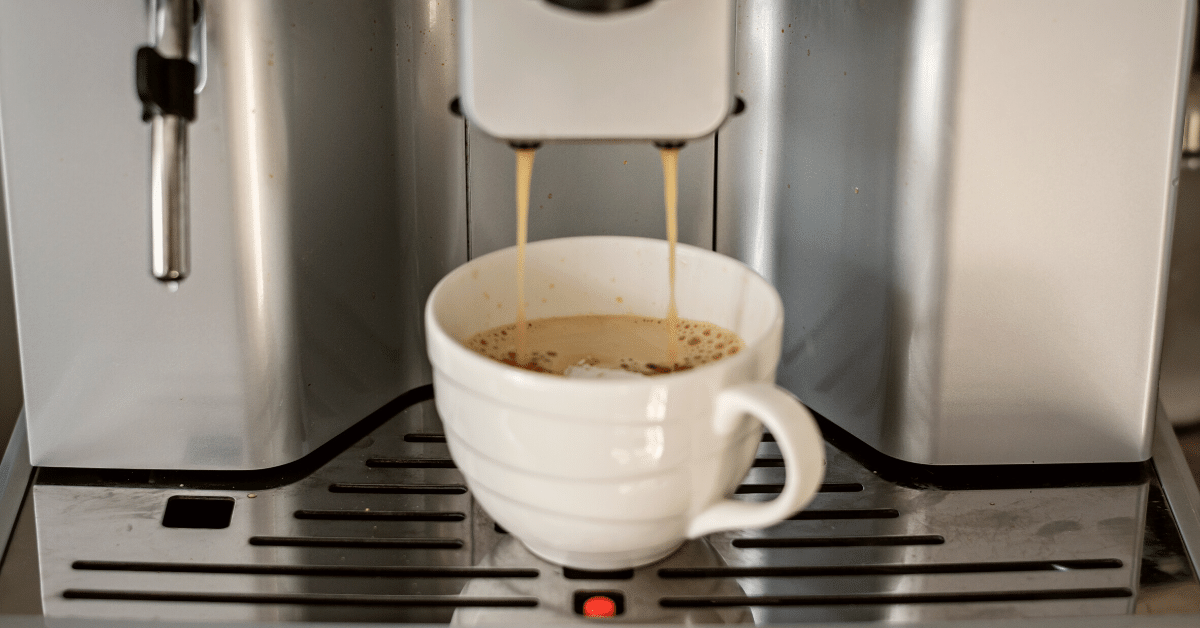Discover the meaning of Frappucino and why this coffee drink is so popular
Frappuccino is a trademarked brand of Starbucks for a line of iced, blended coffee drinks. It’s a word formed by combining “frappe” and “cappuccino,” two different types of coffee beverages.
The “frappe” part comes from the French word ‘frappé,’ which means ‘hit’ or ‘chilled,’ and in the context of beverages, it refers to a chilled drink, often with crushed ice. The term “frappe” is associated with a cold coffee drink in some parts of the world, particularly in Greece and New England, USA.
“Cappuccino,” on the other hand, is an Italian coffee drink that is traditionally composed of equal parts of double espresso, steamed milk, and frothed milk.
Saying “I’d like a Frappuccino” means saying “I want an iced, blended cappuccino.” However, not all Frappuccinos contain coffee. The Starbucks Frappuccino line includes coffee-based and cream-based (no coffee) versions in various flavors.
Today, the brain-freezing coffee drink slurped through a green straw epitomizes a refreshing summer beverage.
For over two decades, the Frappuccino Roast and similar beverages have been some of the most-ordered drinks at Starbucks.
So, what makes it stand out from other coffee-based beverages?
Well, there’s so much more to Frappuccino than its ingredients.
This article covers everything from Frappuccino origins and cultural impacts to popular flavors and recipes.
The Birth of the Frappuccino
Nothing says “I’m a grown-up now” like developing a coffee-drinking habit. For many teenagers and young adults, a Frappuccino is the perfect rite of passage into adulthood. And it’s been like that for 20 years now.
As you know, Frappuccino is a Starbucks’ trademark drink, but it actually wasn’t created by the brand. The genius behind the famous beverage is Andrew Frank, a then-manager at the Coffee Connection.
In 1992, the owner of the coffee shop, George Howell, asked Frank to make a trendy summer drink to boost sales. His recipe blended coffee, milk, sugar, and ice into a frozen yogurt machine for a creamy consistency.
This simple summer drink really did what it was meant to do – within a year, the Coffee Connection doubled the business, expanding to 23 locations. The brand became so big, it caught the eye of another fast-growing coffee chain, Starbucks.
It wasn’t long before Starbucks acquired the Coffee Connection and the exclusive rights to Frappuccino. With a few tweaks on the original recipe, the first Frappuccino debuted in 1995 in the US.
The rest is history. Within the first year, Frappuccino made $52 million in sales!
What is a Frappuccino?
“Frappuccino” is a Starbucks brand name, referring to a line of iced, blended coffee drinks. The name combines “frappe,” meaning chilled, and “cappuccino,” the famous Italian coffee drink. However, not all Frappuccinos contain coffee.
The base structure of a Frappuccino hasn’t changed much over the years. It’s made of espresso, milk, and ice, blended together to achieve a smooth texture.
Depending on your liking, The drink is usually topped with whipped cream and syrups. Starbucks offers 19 official Frappuccino flavors, but you can make as many as 36,000 different flavor combos.
From chocolate chip and mint to matcha and pumpkin spice, there’s a flavor combo for every taste.
As you probably know, Frappuccino shares base ingredients with many other coffee drinks. This can make it a bit difficult to differentiate between them.
Similarities between Frappuccino and iced coffee are often confusing, as they’re both chilled. The key difference is that in its basic form, iced coffee is simply coffee served over ice. Any coffee can be used – from cold brew to filter and instant.
When it comes to Frappuccino, espresso is used. Furthermore, Frappuccino also includes other ingredients like milk and sweetener.
Of course, we can’t forget about the texture either. Since the ice in Frappuccino is blended with other ingredients, the final result is creamy and smooth. For iced coffee, ice cubes are typically used.
Another drink often confused with Frappuccino is the one it got its name from – a frappe. The frappe base recipe is pretty much the same, except for instant coffee being used instead of an espresso. What’s more, a frappe is shaken or whisked, not blended.
Even though the name might suggest otherwise, Frappuccino and cappuccino aren’t much alike. Both have espresso and milk in them, but that’s where the similarities end. Not only they’re served differently, but the two drinks also have different textures.
When served with toppings, I find Frappuccino most resembling a chilled mocha. My favorite guilty pleasure drink, mocha is made of espresso, chocolate syrup, milk, and whipped cream. In a way, Frappuccino is like a summer version of this delicious beverage.
Frappuccino Recipes
While it might seem like a lot is happening in the cup, Frappucino is a rather simple drink. With a blender and the necessary ingredients, you can enjoy homemade versions whenever you feel like drinking coffee.
For this Frappucino recipe, you’ll need the following ingredients:
- Ice
- Espresso
- Milk
- Sweetener
- Toppings of your choice
The original recipe involves a proper espresso shot made with an espresso machine. But if you don’t own one, you can make strong coffee using a Moka pot or an AeroPress.
To make a Frappuccino, here’s what you need to do:
- Combine espresso, ice, milk, and sweetener into a blender. Blend on a high speed until you reach a smooth consistency.
- Pour the mixture into a tall glass, then use the toppings of your choice.
What I love about Frappuccino the most is its versatility. You can play around with the ingredients and customize the drink.
Frappuccino is generally packed with calories since it’s loaded with cream and sweeteners. But that doesn’t mean you must avoid drinking at all costs if you’re on a stricter diet. Most ingredients can be swapped for a healthier, just as a delicious alternative.
While Starbucks uses 2% milk to achieve the perfect creaminess, you can swap it for skimmed or non-dairy milk for similar results. In the case of the latter, oat, almond and soy milk all blend nicely, so they’re ideal options for a Frappuccino. Read our guide to cheap Starbucks drinks.
When it comes to sweeteners, you also have plenty of options. Sugar, honey, and sweetened condensed milk are great additions to your chilled drink. If you’re watching calories, substitutes like stevia or agave nectar can be used instead.
Like flavored coffee? A pump or two of your favorite syrup can turn your basic Frappuccino into a dessert. It doesn’t matter what you go with, as practically every syrup flavor will complement a Frappuccino.
Popular Frappuccino Flavors
Today, you can get a Frappuccino in practically any flavor you want. One of the more popular drinks on Starbucks’ regular menu is Chocolate Java Mint Frappuccino. This cold beverage combines blended coffee, chocolate, and mint. Then, it’s topped with mocha sauce, whipped cream, and chocolate-mint cookie crumbles. It tastes just like Thin Mints!
Many popular Frappuccino flavors are exclusive to specific locations.
Coffee Jelly Frappuccino blew up in Pacific Asia and Japan when it first appeared on menus. The drink consists of three layers: coffee jelly, caramel Frappuccino, and whipped cream drizzled with caramel sauce. It might sound odd, but it’s delicious. Like this article? Read our guide to caramel Starbucks drinks.
Another popular Frappuccino flavor in Japan is Tiramisu. The drink is topped with a layer of brownie, cookie crumbles, and cream cheese mousse, so it’s practically a dessert in a cup.
Caramel Popcorn Pretzel Frappuccino is only available in the UK and Australia and for a limited time. But while available, this drink is one of the most popular orders in these regions.
Finally, Snowball Dark Mocha Frappuccino is a wintertime-special drink in Indonesia and Vietnam. This perfect holiday beverage is topped with espresso whipped cream and rice crispy balls, which gives it an unexpected crunch.
The Cultural Impact of the Frappuccino
The Frappuccino really revolutionized the coffee-drinking habits of people around the world. Before this drink, Starbucks was envisioned as an artsy, European-style café. But with the invention of the Frappuccino, it became a haven for teens, removed workers, and moms.
Numbers speak in favor of that statement. Today, this drink accounts for 11% of Starbucks sales, which is the same percentage as the year Frappuccino debuted. Of course, marketing plays a huge role in the drink’s popularity.
By trademarking the word “frappuccino,” the brand ensured no other brand could use the name in their menus. That’s why you can’t find a Frappuccino anywhere else but at Starbucks.
Of course, similar drinks are available by other brands, but they’re named differently. For instance, Wendy’s Frostycino has pretty much the same ingredients as the Starbucks version.
Aside from trademarking, another great Starbucks marketing strategy is offering limited-offer drinks. Whenever there’s scarcity, a product automatically becomes more attractive and causes an increase in demand. Well, that’s what happens with Starbucks drinks available for a short period of time.
And among them, Frappuccinos are the drinks most commonly offered in limited-offer flavors. The fear of missing out makes people more interested in these drinks than if they were a regular part of a menu.
Final Thoughts On The Meaning Of Frappuccino
From the moment it became a staple on the menu, Frappuccino took the world by storm.
It’s a drink that everyone loves sipping on – from teens and casual coffee drinkers to remote workers telecommuting from the café.
Naturally, good marketing plays a role in popularity, but the main factor behind its popularity is definitely its versatility. You can customize your drink with various ingredients and make it your own.

